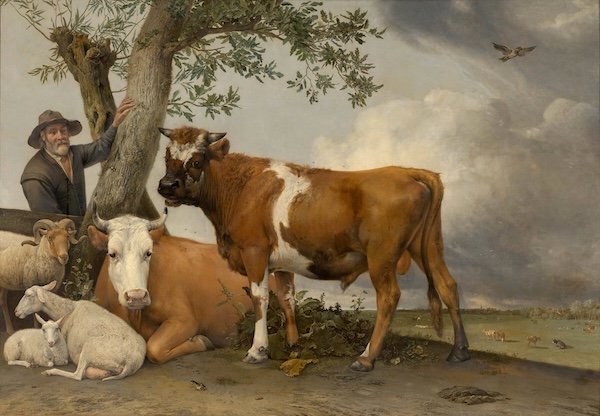Lecture: Peek at Potter – Technical Examination of Potter’s The Bull (De Stier)
The Explorers Club, NYC, October 23, 2025, 6-8:30 pm

Through a connection with CAA co-founder Hans van den Houten, Chase alumni are invited to attend a NYC lecture by the two paintings conservators of Paulus Potter's The Bull (1647), a monumental painting that is a highlight in The Hague's Mauritshuis, the small world-class museum that is also home to Vermeer's The Girl with the Pearl Earring.
The event will be held from 6:30 to 8 pm on Thursday, October 23, 2025, at The Explorers Club, 46 E. 70th Street, New York, NY. (A chance to see The Explorers Club is itself a reason to attend the event!)
The lecture will be followed by drinks and substantial hors d'oeuvres. Admission is $80, payable through the American Friends of the Mauritshuis via the link provided.
According to Wikipedia:
"At about life-size, this is an unusually monumental animal painting that challenges the hierarchy of genres by its almost heroic treatment of an animal. The large size allows space for very detailed realism, including a number of flies, that was both admired and criticised, especially in the 19th century.
"The painting is signed and dated 1647, meaning that Potter, who was born in November 1625, was only 22 when he completed it; he died in 1654, before he reached 30.[The painting was highly admired in the 18th and 19th centuries; in the 1870s the French artist and critic Eugène Fromentin asserted confidently that it, Rembrandt's The Night Watch, and his The Anatomy Lesson of Dr. Nicolaes Tulp (also in the Mauritshuis) were the three most famous paintings in the Netherlands.
"The painting was eventually enlarged by Potter, who added extra strips of canvas on both sides and at the top to his original composition, which just included the bull itself. The village in the background is Rijswijk, between Delft and The Hague. Paintings of animals in landscape were Potter's speciality, this is the largest apart from his single life-size equestrian portrait; most of his works are far smaller.
"The bull was a symbol of prosperity to the Dutch, hitherto overlooked in art, and apart from the horse was by far the most commonly shown animal in Dutch Golden Age painting; goats were used to indicate Italy.
"This is an enormous and famous portrait which was in the Prince William V Gallery collection that Napoleon took to Paris in 1795 and through a later treaty was returned in 1815. It hung in the Louvre for 20 years. Livestock analysts have noted from the depiction of the various parts of the bull's anatomy that it appears to be a composite of studies of six different animals from widely different ages."
Register
For more information about the event and to register, click here. Password: Chase2025
Note: Registration and payment ($80) is through the American Friends of the Mauritshuis.
If you have additional questions about the event, contact Andrea at news@chasealum.org, and she will try to find you answers from the museum staff.

